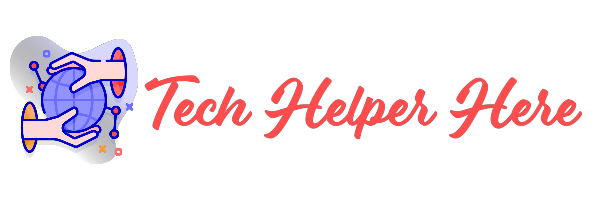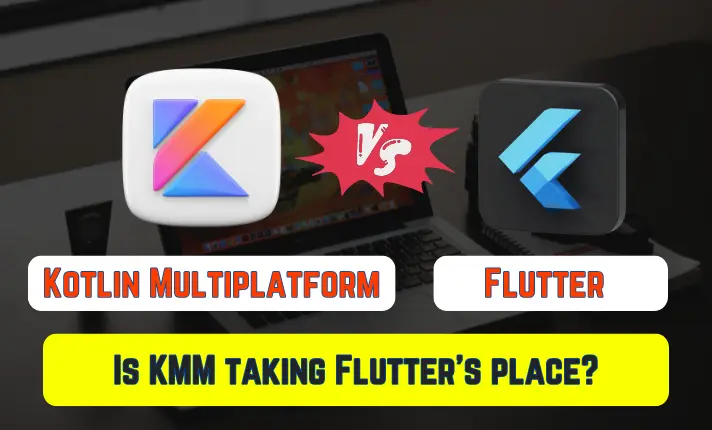Is KMM taking Flutter’s place? Check out a fair comparison of these cross-platform mobile development frameworks to find the right one for your project.
People in the mobile development world keep talking about Kotlin Multiplatform Mobile (KMM) becoming more popular than Flutter for cross-platform solutions. But is this change happening?
KMM and Flutter have shown they’re strong tools to create mobile apps that work on Android and iOS using one codebase. But they meet different needs and follow different development ideas. This article aims to give a balanced view by looking at the good and bad points of both KMM and Flutter. This can help Android developers and Flutter fans decide which framework fits their next project best.
The Basics of Cross-Platform Mobile Development
Cross-platform app development creates mobile applications that work on multiple operating systems, like iOS and Android using a single codebase. This method lets developers write the app’s main functions once and then roll it out across different platforms with only small tweaks.
Here’s why cross-platform development has become so popular:
Smoother Development Process: Cross-platform frameworks let developers write code once and launch it on multiple platforms. This cuts down on development time when you compare it to building separate native apps for Android and iOS.
Bigger User Group: Launching your app on the App Store and Google Play Store with one codebase lets you connect with more potential users on both major mobile platforms.
Money-Saving Development: Using a shared codebase can cut down on development costs when compared to creating and keeping up separate native apps for each platform.
Easier Upkeep: You need to apply updates and fix bugs in the shared codebase, which makes it simpler to maintain both Android and iOS versions.
But how does cross-platform development work in real life? Here’s a simple breakdown:
Shared Core Logic: Tools like Kotlin Multiplatform Mobile (KMM) and Flutter let Android developers share key functions across platforms. These include business logic and data access. This common base cuts down on repeated code and boosts how developers can work.
Platform-Specific UI: The core logic is shared, but the user interface (UI) relies on tools made for each platform. Flutter, for example, uses Dart to build UIs. KMM, on the other hand, uses native languages – Kotlin for Android and Swift for iOS. This method makes sure users get an experience they know and that works well on their device.
In short cross-platform development strikes a balance. It reuses code to save time and taps into what each platform can do to give users a smooth experience.
Kotlin Multiplatform Mobile (KMM): An In-Depth Look
Kotlin Multiplatform Mobile stands out as an attractive choice for cross-platform mobile development for Android developers. Let’s break down its main features and important points to consider:
Shared Codebase Power
KMM shines in its capacity to share code between Android and iOS platforms. This shared codebase handles functions like:
Business Logic: Developers can write the core logic of their app such as data processing and calculations, in Kotlin and use it on both platforms.
Data Management: KMM enables developers to implement shared code to access and manage data ensuring both platforms stay consistent.
Platform-Specific UI Development
While KMM excels in shared logic, developers create the user interface (UI) with platform-specific tools:
Android: Android UI development in KMM uses Kotlin giving a well-known experience to those who already know Android development.
iOS: iOS UI development in KMM uses Swift, Apple’s native language to build iOS apps. This ensures top UI performance and a native look on iPhones and iPads.
Advantages of Kotlin Multiplatform:
Faster Development: Sharing core functionality code cuts down development time compared to building separate native apps for Android and iOS.
Easier Upkeep: One codebase for main logic makes fixing bugs and updating simpler on all platforms.
Performance Like Native Apps: KMM uses platform-specific languages for UI development so your app gives users a great experience on each platform.
Challenges of Kotlin Multiplatform:
- Harder to Master: Learning KMM can be tougher than just Flutter development, because you need to know both Kotlin and languages for specific platforms.
- Tricky to Set Up: Starting a KMM project can be more complex than Flutter because it works on many platforms.
Overall, KMM has a powerful influence on Android developers who want to use code again for main functions while keeping native speed and UI experiences. But it’s key to think about the time it takes to learn and how complex it is to set up a project before you commit.
Flutter: A Comprehensive Overview
Flutter has become a top pick because it makes cross-platform mobile development easier. Let’s look at what Flutter offers:
One Codebase, Wide Reach
Flutter allows Android developers to build mobile apps for Android and iOS using one set of code written in Dart, a new and clear programming language. This cuts down on development time compared to building separate native apps from scratch.
Efficient Declarative UI
Flutter has an influence on UI creation through its declarative approach. Developers explain the UI state they want instead of giving step-by-step directions. This makes development easier and allows quicker changes to UI designs.
Extensive Widget and Plugin Ecosystem
Flutter offers a huge collection of pre-made widgets and plugins for many functions. These parts speed up development by providing ready-to-use pieces for common UI elements such as buttons, text boxes, and side menus. Plus, plugins boost Flutter’s abilities to work with device features like camera use, location finding, and sharing on social media.
Top Flutter UI Frameworks and Libraries in 2024
Check out top Flutter UI frameworks and libraries. They help you build great-looking useful UIs quicker and have features to handle state, animations, and more. These tools let Android developers make smooth responsive apps without much fuss.
Swift Development: Flutter’s single codebase quick code updates, and big widget collection speed up how fast Android developers can build apps.
Focus on Design: Flutter shines when it comes to making attractive interactive interfaces. This makes it a go-to choice for developers who care about looks and user experience.
Strong Community: Flutter has a lively diverse group of developers. They offer tons of help, guides, and support for coders of all levels.
Flutter Considerations:
Native Feature Limitations: Flutter might not access some platform-specific functions as well as KMM. KMM could work better for complex native integrations.
Potential Performance Impact: Sometimes, using many complex UI elements or animations in Flutter could slow down the app a bit compared to native apps. But for most mobile apps, Flutter performs well.
Flutter shines with its ease of use quick development, and focus on creating beautiful user interfaces. But it’s good to know that it might have some limits when it comes to using specific native functions.
Kotlin Multiplatform vs. Flutter: Making the Right Choice
We’ve looked at what’s good and not so good about KMM and Flutter. Now let’s tackle the big question: which one should you pick for your next project? The answer, like most choices in development, depends on what you need and what’s most important to you. Here’s a breakdown to help you decide:
Consider Kotlin Multiplatform if:
You need deep native features: Your app relies on features that need to work with native functions on both Android and iOS. KMM lets you build platform-specific UIs using Kotlin (for Android) and Swift (for iOS) giving you fine-tuned control in these cases.
Your Team Knows Kotlin Well: Using your team’s Kotlin skills can make learning KMM much easier.
You Need to Share Complex Logic: If your app has a lot of shared business logic and data access across platforms, KMM’s focus on reusing code can make development and upkeep simpler.
Opt for Flutter if:
Quick Development and Getting to Market Matter: Flutter’s single codebase quick code updates, and many ready-made widgets help speed up development. This lets android developers bring apps to market faster.
UI-Driven Applications Thrive: Projects that value appealing and interactive interfaces find Flutter’s rich UI capabilities and declarative approach ideal to create smooth user experiences.
Team Proficiency Matters: Developers who know Dart or similar languages like JavaScript will adapt to Flutter development easier than learning Kotlin for KMM, which might shorten the learning process.
Balanced Native Feature Access: Flutter allows access to most common device features, but projects that need very specific and deep native integrations might see KMM as more flexible.
The Horizon of Cross-Platform Mobile Development
The scene of cross-platform mobile development keeps changing. People still work on and make KMM and Flutter better. Let’s look at what might happen next:
1. Advancing Native Capabilities
KMM and Flutter will get closer to native app features. This could mean easier access to specific device functions and tweaks for a smooth user experience on all platforms.
2. Expanding Developer Resources
As these tools grow up, expect to see more developer aids, code libraries, and how-to guides. This will help more people use these technologies and build strong apps that work on many platforms.
3. Emphasis on Performance and User Experience
The pursuit of exceptional performance and flawless user experience remains paramount. Both KMM and Flutter will likely see improvements in areas such as code optimization, UI rendering, and integration with native features to ensure apps deliver smooth and responsive experiences across all devices.
Final Thoughts
The notion of KMM “replacing” Flutter may be overstated. Instead, both frameworks offer distinct advantages for cross-platform mobile development, catering to different project needs and development approaches.
KMM excels with its focus on code reusability and native performance, making it a strong contender for applications requiring deep integration with platform-specific features.
Conversely, Flutter shines in rapid development with its single codebase and rich UI capabilities, ideal for projects where time-to-market and visually stunning user experiences are top priorities.
For android developers looking to expand their skill set, both Flutter and KMM offer exciting opportunities. Flutter’s rapid development cycle and design-centric approach can be particularly appealing, while KMM leverages existing Kotlin knowledge for those already proficient in Android development.
Ultimately, the choice between KMM and Flutter depends on your project’s specific requirements, your team’s expertise, and your long-term development goals. Both frameworks continue to evolve, promising exciting advancements in the realm of cross-platform mobile development.
The ultimate decision hinges on selecting a framework that aligns perfectly with your project’s needs and your team’s expertise. By grasping the strengths and considerations of both KMM and Flutter, you’re equipped to make a well-informed choice that propels your mobile app development project towards success.
The horizon for cross-platform mobile development shines brightly, with KMM and Flutter continuously evolving to provide even more robust tools for crafting exceptional mobile applications. For android developers, both frameworks offer unique opportunities to expand their skill set. Flutter’s rapid development cycle and rich UI capabilities can be particularly appealing, while KMM leverages existing Kotlin knowledge.
Stay curious, explore the possibilities, and happy coding!














